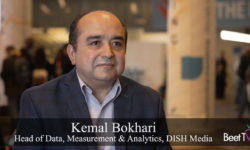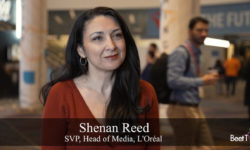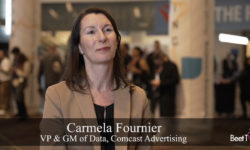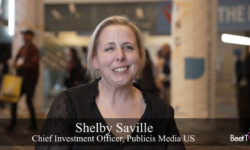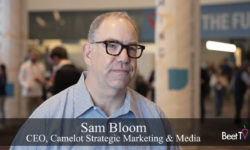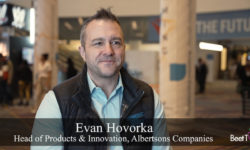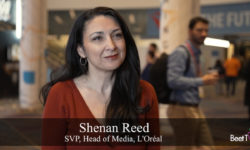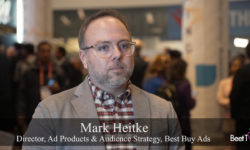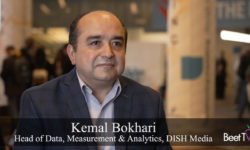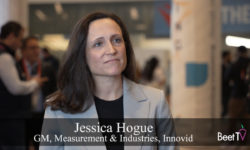LAS VEGAS — Not everyone would describe software for privacy-compliant data integration and enablement as “exciting”.
But that is exactly what a growing number of people in media and advertising are saying about the emerging category of “clean rooms”.
In this video interview with Beet.TV, a vendor of one such solution says the tech has emerged from its wonky days in the isolation of data science labs – now it is getting into the hands of media buyers and publishers.
Democratising clean rooms
Clean rooms enable advertisers to collaborate with data with their partners in a secure environment – without sharing the data itself.
“They were tools that were very much geared for use by analytics and data science teams,” says Alice Stratton, Chief Revenue Officer, Habu, who says she is seeing the “democratisation” of the software category.
“If you were a buyer or planner or someone who was looking to essentially run some simple use cases, maybe create some segments and run some campaigns, it was really hard to get started with clean rooms,.
“We were hearing teams having to kind of beg, borrow and steal resources to get their campaigns or their use cases off the ground.
“So one of the things that we thought was really important … is making them accessible and easy to use for a broader range of people internally.”
Collaborate on data
Habu was co-founded by Matt Kilmartin and Mike Moreau to enable data collaboration in a world of walled gardens and privacy imperatives.
It supports privacy and governance, plus data collaboration, across a range of data locations, including cloud providers, media platforms, identity systems, activation suites and more.
Don’t miss this @Beet_TV interview with Habu’s CEO Matt Kilmartin where he describes how data clean rooms are helping advertisers transform what they can do with data and collaborate with partners in ways not possible before.
Watch the interview here: https://t.co/YcmI7P9U2i
— Habu (@HabuHub) January 10, 2023
So, what are “clean rooms”, exactly?
Stratton says: “You can think of a clean room as an environment that enables the enablement of data collaboration by allowing two parties … to be able to come together and collaborate for the purposes of data insights, measurement or even activation.”
The key is the tech is “their data is only going to be made available to who and for the purposes that they’ve agreed upon from the outset”.
Focus on learnings
In 2023, application of the technology is emerging from the theoretical to the practice use cases.
“In many instances, it’s bringing new data sets to the forefront that were previously inaccessible for various reasons – whether it be because of regulation or strategic considerations, prohibiting sharing of data,” Stratton says. She says that is opening up new possibilities and new opportunities.
As more people are hearing about the new software, more are becoming convinced it could help them make better, privacy-compliant use of their data.
But Stratton cautions customers against leaning into the many use cases that clean rooms could help support, lest they get overwhelmed by the possibilities.
“What we really encourage our customers to do is think about a learning agenda,” she says. “Don’t get caught up in the 50 or so use cases that you could free-form brainstorm if you think about the potential of the technology, but rather dial into what is it that you really want to learn from the data.”
You’re watching ‘Clean Rooms: Collaboration Goes Mainstream,’ a Beet.TV Leadership Series produced at CES 2023, presented by Habu. For more videos from this series, please visit this page. For all of our coverage from CES 2023, please click here.






